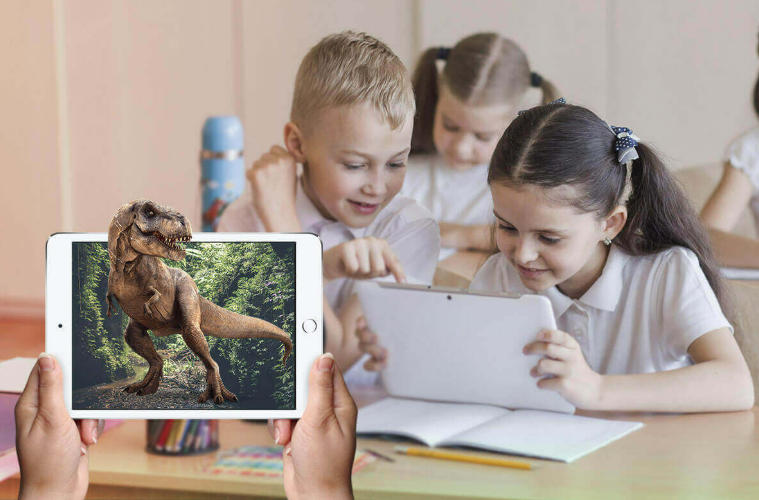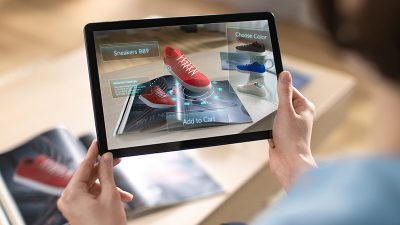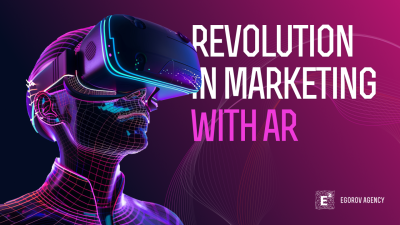Augmented reality has moved far beyond entertainment and gaming, finding powerful applications in fields where precise visualization and immersive learning truly matter. The education and healthcare sectors have emerged as frontrunners in meaningful AR adoption, with implementations that solve real problems and create genuine value.
Revolutionizing the Classroom Experience
Traditional classrooms have always been limited by physical constraints. Textbook illustrations remain static, complex concepts stay flat on paper, and student engagement often suffers as a result.
AR changes this dynamic fundamentally. History students can now watch historical events unfold on their desktops. Ancient Rome rises from the pages of textbooks, allowing students to explore architectural details impossible to appreciate in 2D illustrations.
Science classes benefit enormously from AR visualization. Students exploring the human circulatory system can witness blood flow through vessels in three dimensions, rotating and examining the heart from any angle. This spatial understanding creates deeper comprehension than memorization ever could.
Geography lessons transform when landscapes emerge from flat maps. Students can observe weather patterns developing in real-time over topographical features, creating intuitive understanding of how mountains affect rainfall or how coastal regions experience different climate patterns.
Teachers report significant improvements in retention when concepts move from abstract to visual through AR. Information that might have required repeated drilling now sticks after a single immersive experience.
Language learning finds new life through contextual AR. Students point their devices at objects and see labels in foreign languages, creating natural vocabulary associations. Conversation practice happens with virtual characters responding to pronunciation and syntax, offering immediate feedback without the anxiety of real-world mistakes.
Making Learning Accessible for All Students
AR offers tremendous benefits for students with different learning needs. Visual learners thrive with spatial representations, while kinesthetic learners engage through physical interaction with virtual objects.
Students with attention challenges often maintain focus longer when learning incorporates AR elements. The interactive, responsive nature of the technology naturally engages the brain’s reward systems, making sustained attention less effortful.
For students with physical disabilities, AR brings experiences that might otherwise be inaccessible. Virtual field trips allow exploration of terrains unsuitable for wheelchairs, while complex manipulative tasks can be practiced without fine motor control requirements.
Transforming Medical Training and Practice
Medical education faces unique challenges. Students must master incredibly complex anatomical knowledge and develop procedural skills where mistakes can have serious consequences. AR addresses both needs.
Anatomy training becomes remarkably more effective when students can visualize structures in three dimensions, peeling away layers to understand spatial relationships between organs, vessels, and tissues. Medical schools report faster learning curves and better retention compared to traditional methods.
Surgical training benefits tremendously from AR simulation. Students practice procedures repeatedly on virtual patients, developing muscle memory and decision-making skills before ever touching a real patient. Mistakes become valuable learning opportunities rather than potential tragedies.
The transition from training to practice happens more smoothly when students have practiced with tools mirroring those used in actual procedures. AR simulations can incorporate the exact instruments and equipment students will eventually use in clinical settings.
Enhancing Patient Care and Outcomes
Beyond education, AR is transforming direct patient care. Surgeons now use AR overlays during complex procedures, seeing critical structures highlighted in real-time. This visualization helps avoid damaging important vessels or nerves that might be difficult to identify visually.
Vein visualization technology uses AR to project vein maps onto patients’ skin, making intravenous access easier, especially for patients with difficult veins like children or the elderly. This simple application reduces failed attempts and patient discomfort significantly.
Rehabilitation has been revolutionized through gamified AR exercises. Patients recovering from strokes or injuries engage with interactive environments that make repetitive movements engaging rather than tedious. When therapy becomes enjoyable, compliance rates improve dramatically.
Mental health treatment incorporates AR for exposure therapy, allowing patients to confront phobias in controlled environments. Heights, public speaking scenarios, or other anxiety triggers can be introduced gradually, with therapist guidance throughout the process.
Remote healthcare benefits tremendously from AR applications. Specialists can guide local providers through procedures by drawing instructions that appear in the local provider’s field of view. This capability brings specialized expertise to underserved areas without requiring physical presence. For more insights on implementing AR in remote healthcare settings, visit our comprehensive guide.
Implementation Challenges and Solutions
Despite clear benefits, educational and healthcare institutions face implementation hurdles. Budget constraints often limit hardware availability, especially in public education settings.
Creative solutions include shared device programs, where AR equipment rotates between classrooms. The most successful implementations start with targeted applications where AR provides clear advantages over traditional methods, building support for broader adoption.
Training requirements present another challenge. Faculty and healthcare providers already face significant demands on their time, making extensive technology training difficult to accommodate.
Institutions finding success typically designate AR champions who receive comprehensive training and then support their colleagues. These peer resources prove more effective than external trainers, as they understand the specific context and challenges of their environments.
Looking Toward the Future
As hardware becomes more affordable and software more sophisticated, we can expect AR to become standard in educational and healthcare environments. The development of specialized applications targeting specific learning objectives and clinical needs will accelerate adoption.
The next generation of healthcare providers and educators will have grown up with immersive technologies, naturally incorporating them into their practice. This generational shift will eliminate many current adoption barriers.
Outcome research continues to validate AR’s effectiveness, providing the evidence base needed for institutional investment. Studies consistently show improved learning outcomes and patient results when AR supplements traditional methods.
The most transformative potential lies in combining AR with artificial intelligence, creating adaptive learning and treatment experiences that respond to individual needs in real-time. This personalization represents the next frontier in both education and healthcare.
Conclusion
Augmented reality in education and healthcare represents that rare technology that delivers substantial benefits to all stakeholders. Students and patients enjoy more engaging, effective experiences. Educators and healthcare providers gain powerful tools that enhance their capabilities. Institutions achieve better outcomes with measurable improvements.
As the technology continues to mature, the question shifts from whether AR belongs in these settings to how quickly and comprehensively it can be implemented. The future of learning and healing increasingly includes digital elements seamlessly blended with physical reality.





